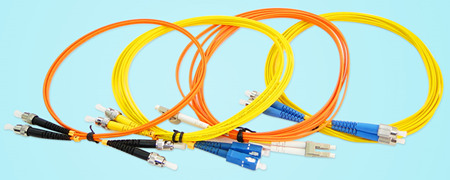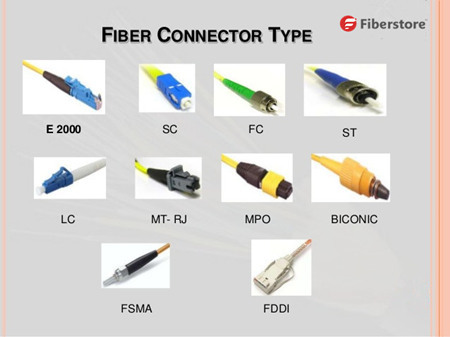Fiber jumper cables are mainly used for connection in the context of optical fiber communications including applications like cable TV (CATV), inside buildings and in fiber to the home (FTTH) installations. Nowadays, optical fiber jumpers are varied in cables and connector types. It is hard to determine the differences between one fiber optic cable jumper and another. This article would put emphasis on guiding you to select the perfect fiber jumper cables from the following six perspectives.

Cable Type of Fiber Jumper Cables
Fiber jumper cables comes in two general types, singlemode and multimode optical fiber jumper. They are different in fiber diameter, classifications of fiber strands, jacket color, transmission speed and etc.
Singlemode fiber jumper cable generally has a 9 micron diameter glass fiber. There are two sub groups (referred to as OS1 and OS2) but most cable is “dual rated” to cover both classifications. Multimode optical fiber jumper can have several different diameters and classifications of fiber strands. The two diameters currently in use are 62.5 Micron and 50 Micron. Within the 50 Micron diameter multimode cable, there are three different grades (referred to as OM2, OM3, and OM4). The cable types used in the patch cord should match that of the network cabling to which they are attached via the patch panel.
Jacket Diameters
The fiber optic cable jumpers may be available in different “jacket diameters” (such as 2mm or 3mm). Thinner diameters (1.6 or 2mm) may be preferable in dense installation within a single rack since they take up less space and are more flexible. Fiber optic cable jumpers that route from rack to rack (especially via cable tray) may be more suitable if they have the thicker jacket that results in larger diameters thus making them more rigid.
Jacket Material
Flammability of the jacket material could become an issue if the area they are in has special requirements for flame spread or products of combustion in case of a fire. In these cases, optical jumpers may have to be classified as “Plenum Rated” (OFNP) rather than “Riser Rated” (OFNR).
Connector Type
See the connector type descriptions below. Some fiber jumper cables may have different connector types on each end to accommodate interconnection of devices with dissimilar connectors. In some cases, there may be a connector on only one end, and bare or unterminated fiber on the other. These are usually referred to as “pigtails” rather than “patch Cords”.

Simplex or Duplex
Unlike copper patch cords which send information in both directions (having multiple pairs of conductors with which to do so), most fiber jumper cables have a single strand of fiber allowing for signal flow in one direction only.
Connecting equipment so that it can send and receive information requires two strands of fiber (one to transmit and one to receive information). This can be accommodated by using two “simplex” (single strand of fiber) cables for each equipment interconnection or a “duplex” cable, with conductors and/or connectors bonded together in pairs.
Length
Overall length of the fiber jumper cables may be specified in feet or meters, depending on your preference.
Conclusion
In this article, we mainly introduce six factors attaching to the fiber jumper cables—cable type, jacket diameters, jacket material, connector type, type of communication service as well as the length. You can select the proper patch cord you need through considering those six attributes. Hope this post is helpful for you to fully understand optical fiber jumper.
